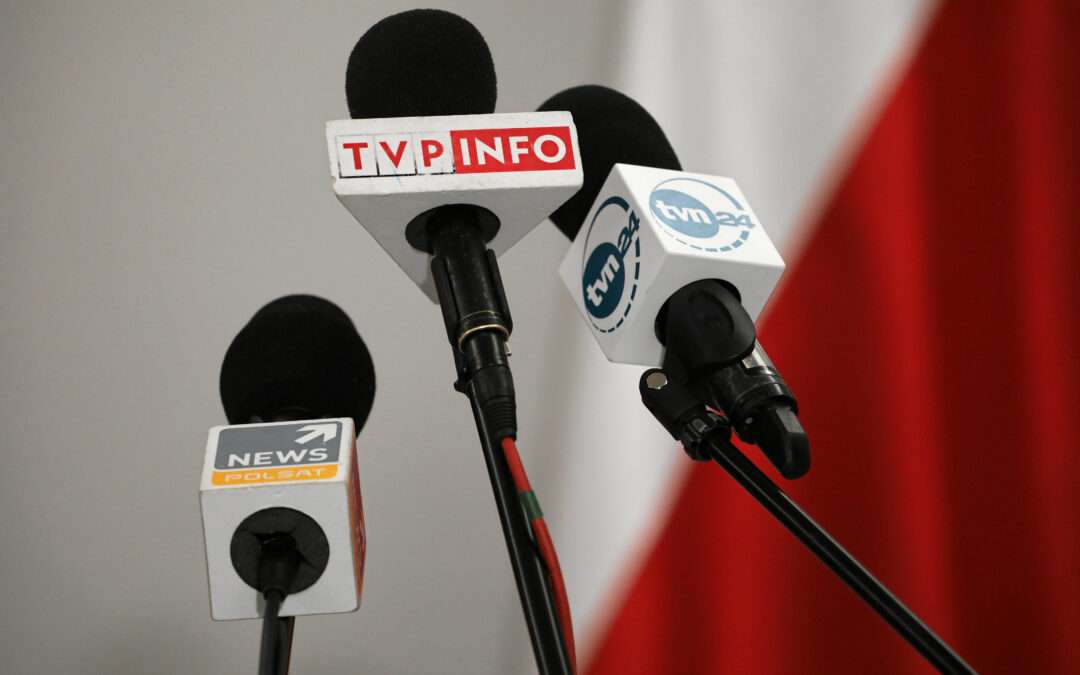Polish public broadcaster TVP is preparing to sue American consumer research giant Nielsen, arguing that its measurements consistently understate the size of the station’s viewership, which has cost it “millions” in revenue. Its case is being supported by the government, which uses TVP as a mouthpiece.
The head of TVP, Jacek Kurski, has accused Nielsen of treating his station “unfavourably”. This, he argues, is partly down to the US firm’s faulty and “non-transparent” methodology, but also because its data sometimes appears to be “intentionally” distorted.
“I believe that our viewership is much higher than that shown by Nielsen,” says Kurski. “According to the estimates available to us, the TVP group has 37% to 39%, or even 40%, of the market, and not – as Nielsen indicates – 28.5%.”
Negative attitudes towards Poland’s public broadcaster TVP have risen to their highest ever level, and outweigh positive attitudes for the first time.
TVP has in recent years been used as a mouthpiece by the government https://t.co/n6dAtTx4G6
— Notes from Poland 🇵🇱 (@notesfrompoland) May 12, 2021
Kurski has long complained about Nielsen’s audience figures, which showed a decline in viewership of TVP news broadcasts after he became CEO in 2016. In 2018, he announced that his station had commissioned an audit of Nielsen’s measurements, but two years later it was revealed that it had never been completed.
In the latest development, last week Kurski met with the government’s minister for state assets, Jacek Sasin. The pair discussed “preparations for a lawsuit by TVP against Nielsen…due to unreliable measurement of television viewership”, which have “resulted in losses of several million zloty”, said TVP in a statement.
Television viewing figures – of which Nielsen is the world’s leading provider – are used by broadcasters to assess their programming and by advertisers to decide where and how much to spend.
According to TVP’s statement, Kurski and Sasin “agreed that, due to the high estimated value of the subject of the dispute, TVP would have to be represented by the General Public Prosecutor’s Office”, a body that acts on behalf of the state treasury. TVP is funded by a combination of state subsidies, TV licences and advertising.
This week, Kurski outlined his objections against Nielsen in an interview with Wirtualne Media, an industry news service.
He accused the US firm of having a “distorted” and “pathologised” measurement system that “lacks transparency and any real oversight”. This results in “unexplained, unfavourable anomalies for TVP”.
Kurski claimed that Nielsen’s methodology favours TVP’s two main commercial rivals, TVN and Polsat. One way it does this is “maybe even an intentional action”, he said, arguing that audience measurements for one of the rival stations looked like someone “put a brick on the gas pedal”.
The other main problem, he said, is that Nielsen’s measurements are based on a sample of around 3,500 households. Their viewing habits are monitored by the firm, with the data then used to extrapolate figures for Poland’s whole population of 38 million people.
Nielsen says that its sample is representative of the country as a whole, and among advertisers it is the main and most trusted source for gauging viewership, notes Wirtualne Media.
But Kurski claims that a disproportionately high share of Nielsen’s sample is “concentrated around Warsaw”, the capital, at the expense of “the provinces”. This has resulted in Poland’s “deep political division” being reflected in its figures, he says.
Large Polish cities, such as Warsaw, are on average more liberal and supportive of the opposition than smaller towns and rural areas, which tend to be conservative and favour the ruling Law and Justice (PiS) party.
Before being appointed as head of TVP, Kurski was a deputy minister in the PiS-led government. Under his leadership, the public broadcaster has been politicised to an unprecedented degree, and is used to promote the government’s agenda and attack its opponents.
To support his claims against Nielsen, Kurski pointed to an alternative measure, known as MOR, produced by Netia, a Polish provider of television services. Its data come from 300,000 households, and often show higher viewing figures for TVP than Nielsen does.
However, though Netia’s sample is larger than Nielsen’s, it is drawn from the firm’s own customers and therefore “not representative”, says Wiesław Godzic, a professor of media studies. Nielsen is regarded as the global leader in producing audience measurements, Godzic told Polska Times.
Even according to Nielsen’s figures, TVP remains Poland’s most-watched broadcaster. Its main channel, TVP1, had an average 9.67% audience share in 2021, followed by Polsat (8.14%) TVP2 (7.84%) and then TVN (7.33%), reports Wirtualne Polska.
However, among the 16-49 age group, TVN was the leader, with a 9.47% share, followed by Polsat (8.86%), TVP1 (6.01%) and then TVP2 (5.83%).
Despite Kurski’s concerns about Nielsen, in November TVP awarded it a 7.65 million zloty contract to provide six months of audiences measurements from a sample “representative of socio-demographic characteristics throughout the country”. Nielsen was, however, the only firm that submitted a bid for the tender, reports Onet.
W 2021 roku liderem oglądalności była @TVP 1 . W grupie 16-49 pierwsze miejsce zajął TVN. Wyraźne spadki zanotowały wszystkie stacje informacyjne https://t.co/GWwXypwAsH
— Wirtualnemedia.pl (@wirtualnemedia) January 3, 2022
Main image credit: Slawomir Kaminski / Agencja Wyborcza.pl

Daniel Tilles is editor-in-chief of Notes from Poland. He has written on Polish affairs for a wide range of publications, including Foreign Policy, POLITICO Europe, EUobserver and Dziennik Gazeta Prawna.




















